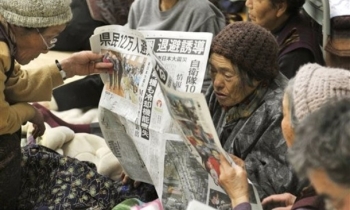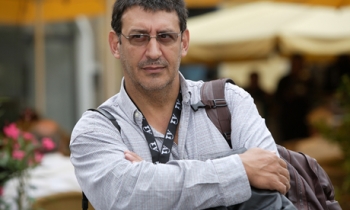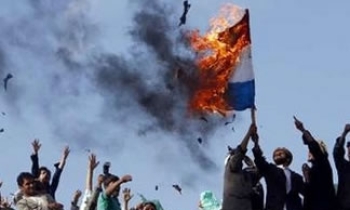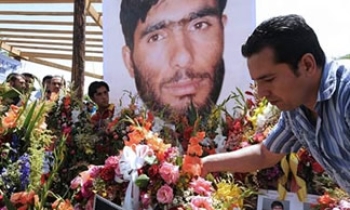The last decade of 20th century was a period of epochal upheaval in India. The Congress monolith fragmented under mounting pressure of religious, casteist and regional aspirations; tottering economy found remedy in liberalisation and, as a result, burgeoning politico-economic consciousness in the Hindi heartland ensured proliferation of Hindi newspapers.
For the first time, Hindi press posed a real challenge to English papers’ supremacy. Hindi newspapers’ circulation started galloping. As a result, Hindi press increasingly felt the need for supply of trained journalists.
The Sunderlal Patwa government recognised the trend. And the result was Makhanlal Chaturvedi National Institute of Journalism. The idea was not Patwa Government’s though. The then Prime Minister Rajiv Gandhi had announced a journalism university after Makhanlal Chaturvedi in the birth centenary function of the great freedom-fighter and journalist in Khandwa a couple of years ago. But subsequent political turmoil did not allow the idea to become a reality till the BJP Government took it upon itself to set up a journalism university in 1990.
Coming, as it did, in the heydays of the Ramjanambhoomi movement, the idea of a journalism university found instant favour in the BJP as the party was keen to infiltrate young journalists who would foster its ideology in the vernacular press.
The idea, therefore, needed a grand project. The BJP Government did think big indeed. A Bill was passed in the State Assembly in 1990 for the university that promised to create a niche for itself through academic excellence.
Eminent jurist Laxmi Mall Singhvi ,one of the architects of the institute of journalism, envisaged it on the line of National Law Institute University (NLIU), Bangalore. The NLIU, Bhopal was yet to be born.
In keeping with Singhvi’s vision, the project was named as Makhanlal Chaturvedi University Institute and the executive head of the institution was designated director general.
But grand ideas need great visionaries for sustenance. The journalism institute was unfortunate on this count. While NLUIs have thrived on excellence of faculties and students, the journalism university has been wallowing in mediocrity for want of the same. No wonder, none of the Makhanlal Chaturvedi institute alumni has shined at a national level so far.
Reasons for the rot are not far to seek. The grandiose project got mired in realpolitic soon after the initial bubble of enthusiasm petered out.
Having appointed BJP sympathisers at the helm of university affairs, the short-lived Patwa Government became indifferent to the institute. It had more pressing problems to attend to. Soon enough, the institute became a hotbed of intra-institutional politics with Director General Radheshyam Sharma and Executive Director Arvind Chaturvedi seeking to assert themselves over each other.
The succeeding Digvijay Singh Government allowed the situation to mess up further. The Congress Government replaced Sharma-Chaturvedi pair with another set of warring duo. Ironically, the next DG, SC Behar, a former chief secretary, lacked journalistic qualification for his post and next executive director Ramsharan Joshi was not qualified for the administrative experience of his post. It was a classic mismatch of roles.
The university’s degeneration as a wholesale dealer of academic shops all over the country was heralded by then ED Arvind Chaturvedi. The retired additional director of the Public Relations department owed his dubious fame and the post largely to the fact of being brother-in-law of the then President of India Dr Shankar Dayal Sharma who had inaugurated the university on January 16, 1991.
Since journalism education was not so lucrative for money spinning, the university took to computer education in a big way. As of now, it has 587 study centres of computer education across the country. It also found way to make money through media education centres that number 50 in India now .
It was the brainchild of former ED Arvind Chaturvedi. Faced with existential crisis following discontinuation of grants by the Digvijay Government, the university started opening study centres. It was how he planned to make the varsity self-reliant.
Using ambiguities in the legislation of the university, he decided to give licences to individuals, societies and trusts to open study centres across the country.
Thus, the university came out of the red. But, once it was flush with funds, functionaries of the university became rather complacent.
No efforts were made to rope- in excellent teachers, academicians or journalists to impart education to students. However, since journalism study had to be pursued to ensure grants from the government, the university resorted to financial and intellectual skullduggery.
It started appointing mediocre faculties on ridiculously low wages to run ever-increasing departments. Retired PR officers and old students dominate faculties. Teachers from academic background are few; experienced journalists are even fewer, if any.
” I am aware that quality of education needs to be standardised in our study centres. Once we find a permanent source of income, we shall like to reduce number of such centres by de-affiliating the ones with dubious credentials”, says Vice Chancellor Achyutanand Mishra. The university’s head has been re-designated from D-G to V-C following amendment in the Act governing its affairs.
The commercial success thus achieved left little time and interest with the university authorities to think about the original idea behind the institute- excellence in journalism and mass communication.
Mishra avers that problem of good faculty is common among all the educational institutions of mass media and communication. The situation is, predictably, off-putting for good students seeking to pursue journalism as career.
Besides, infrastructure is abysmally poor even though 15 years have gone by since the institute was set up. The university does not have its own campus nor hostel facilities for students.
Recently, it has acquired the deserted six-storeyed building of Land Development Bank in MP Nagar for makeshift campus. Achyutanand Mishra is acutely conscious of the incompatibility of a multi-storeyed building being used as a university campus.
” It is a temporary arrangement. Every time we request the University Grants Commission (UGC) for funds, the first question asked is where is your campus”? That’s why we needed a building, which could serve as a makeshift campus. Next year, we shall start construction of our independent campus on 50 acre land provided by the State Government,” said Mishra. His defence is not unfounded.
The UGC never agreed to fund the university, for it does not meet the requisite standards. The State Government, which has the legal obligation to provide an annual grant of Rs 25 lakh to the university, discontinued grants in 1999 after disbursing Rs two crore towards building fund. This was an outcome of a student agitation in 2001. Chief Minister Digvijay Singh announced one-time grant of Rs two crore.
The State Government, perhaps relieved at not being reminded of its obligation to provide resources for running the university, also withdrew from the affairs of the university except for appointment of top functionaries of the institution.
However, government intervention would become necessary in future if study centres were closed. And this danger seems imminent.
The Distant Education Council in concurrence with the UGC decided in 2005 that no university should be allowed to have branches outside the State.
The university had accordingly issued an order for closure of its study centres outside MP. However, some of the persons running the centres moved the High Court and got a stay on the order.
They are admitting students in their respective centres on their own risk. If the court upholds the university order, most of the study centres would be closed. This would mean a grave financial crisis for the university.
The Act under which the university was established provides for two governing councils – Academic Council and the all-powerful General Council. But, both have not been effective and have rarely done anything but endorse the decisions taken by the local management.
The General Council, which is headed by the Chief Minister and comprises distinguished people from various parts of the country, has been as apathetic towards affairs of the university as the State Government.
Caught in the vicious circle of apathy and mediocrity, this unique institution needs a major overhauling in terms of resource mobilisation and faculty excellence.









